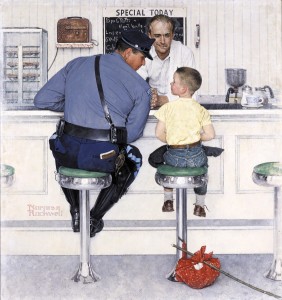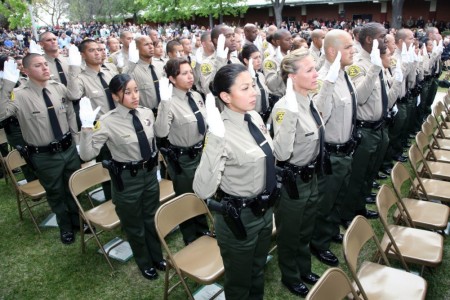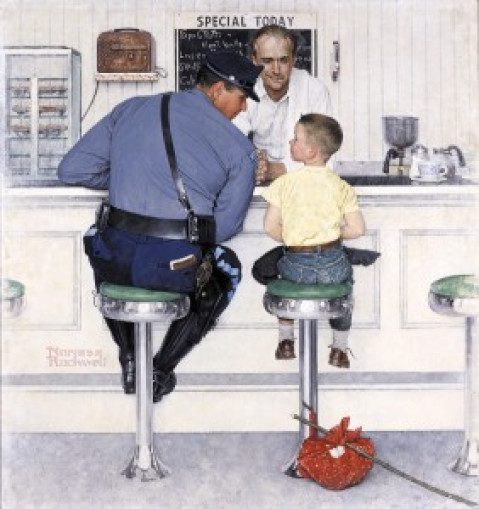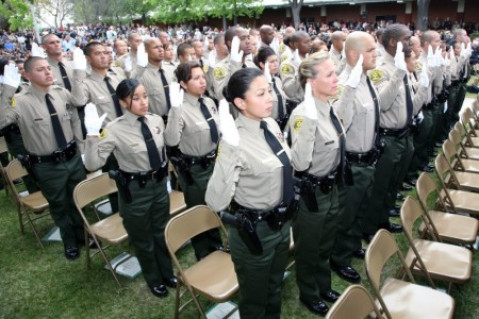Widgetized Section
Go to Admin » Appearance » Widgets » and move Gabfire Widget: Social into that MastheadOverlay zone
The Call of Public Safety Service: A Social and Generational Challenge
The views expressed are those of the author and do not necessarily reflect the views of ASPA as an organization.
By Donal A. Hardin
July 15, 2016

What do you want to be when you grow up?
Over time and throughout generations, public safety service is a type of calling. Although many young folks may still list the prospect of becoming a policeman in response to the question above, socio-political trends are taking their toll on the recruitment pool for this noble profession. Perhaps it’s time to examine some of those influences, as catalysts of public policy, before the crisis expands further.
All across the nation, police forces in major cities are seeing a decline in the number of individuals our communities are producing to respond to the call of public safety service. Why? In 2015, we witnessed “the biggest decline in police numbers among nine comparably-sized U.S. cities.” These recruiting difficulties go well beyond Chicago, New York, Detroit and Los Angeles impacting the public safety of mid and small size cities and communities everywhere. What is causing this decline? Socio-media-political opinions aside, surely this is a troubling trend?
Public safety recruitment and retention are invariably plagued by a brutal attrition rate. On any given night in America, your local police department is manned at, or below, a minimum staffing level well below of what you might expect. Call your local law enforcement agency and ask them what the minimum staffing levels are on a Monday or Saturday night —you might be shocked. Recent words and actions in our culture, politics and media have correlated, if not caused, the condition to worsen. Coupled with the increased requirements and expectations for the field, we might consider how our own desire for safety reconciles with the inevitable and logical conclusions drawn from the dilemma of shrinking police forces.
Further complicating the issue, a large number of officers are now taking early retirement. In some cases, this means a mass exodus overnight and a corresponding evaporation of much of the experiential wisdom and skills possessed by veteran officers. For example, the Los Angeles Police Department “loses five police officers a day to retirement.” And “in Baltimore, 400 of 500 officers took early retirement —far more than officials had expected.” Not surprisingly, this reduction in Baltimore coincided with a 63 percent increase in homicides throughout the unrest of 2015. Reporting on the thousands of unfilled police officer positions that already existed several years ago, the International Association of Chiefs’ of Police (IACP) noted that “many police departments now find it nearly impossible to fill all police officer positions…as increasing numbers of peace officers elect early retirement” for a variety of personal and professional reasons.
Perception and reality both play a harmful role. Although the odds of being shot and/or killed in the line of duty remain low, media portrayal of policing activities and use of force is negatively impacting recruitment. This point is summarized succinctly by Seattle police recruiter Jim Ritter who characterized the trade-off: “You can get shot at for $40,000 or be home with your family for $60,000.”
The IACP has also identified the recruiting problem as a generational issue:
A major difference between the baby boomer generation and the expectations of today’s work force is the change from a life that revolved around a job to a life that includes family and activities (the work-life balance). Careers in law enforcement require people to spend much of their time in an environment primarily consisting of the bad elements of society, including criminals, abusive relationships and individuals involved in drugs or other contraband. This environment is not conducive to balancing work and family requirements.
So why would anyone choose it? Or perhaps a better question is —why did they?

Fewer officers mean fewer police cars patrolling the streets. Many departments are now (temporarily) returning to two-officer units in the wake of the Dallas attacks and a number of lesser-profiled attacks around the nation. This means that yesterday, if there were 10 cars available for patrolling the streets of your neighborhood there may now be only five.
Dedicated public servants and the “sheepdog” types with the lifelong dream of entering police work will never be dissuaded from answering the call to serve and protect. But the bulk of the shortages and defections will be those other community members who are great character fits for public safety service that never really considered the career before –and probably won’t now. Recruitment and outreach efforts represent but one variable in this equation. Generational gaps and motivational factors may be addressed within the profession. Regrettably, any internal adjustments may now be negated by the encumbering effects of socio-political influences discouraging the next generation from altruistic public service that involves extreme levels of accountability and self-danger.
If we have created an environment that disheartens either group, we should consider the wisdom and prudence of such a cultural course before we damage ourselves any further. Leadership and words matter indeed; ethics and the public weal demand public policy makers capable of wise and altruistic applications of both.
Author: Donal Hardin is a retired policing and corrections professional specializing in public safety ethics. Having filled various roles at institutions of higher learning, Donal is currently teaching criminal justice coursework. Donal holds a Ph.D. in public policy and administration and a master’s degree in criminal justice. He can be reached at [email protected].






Follow Us!